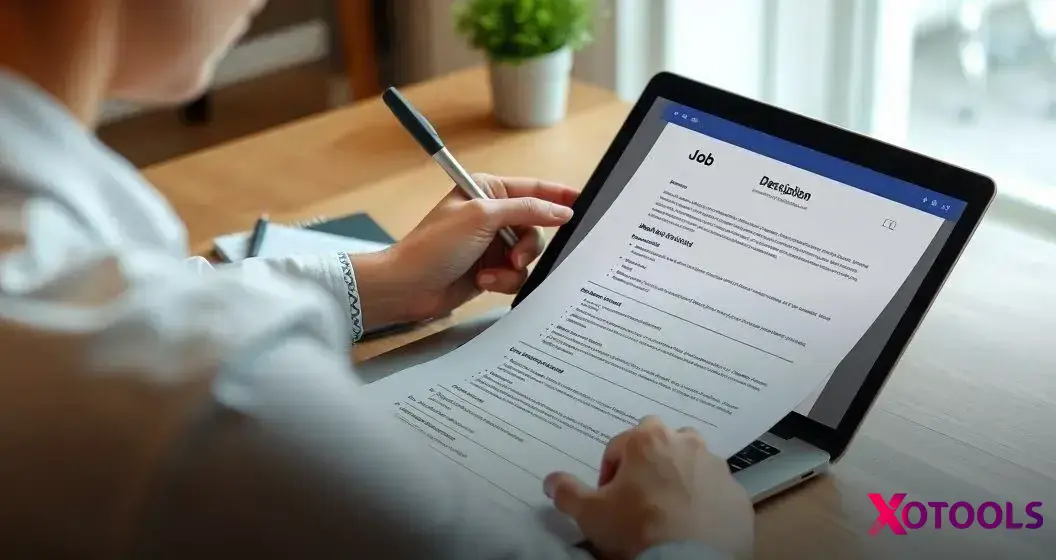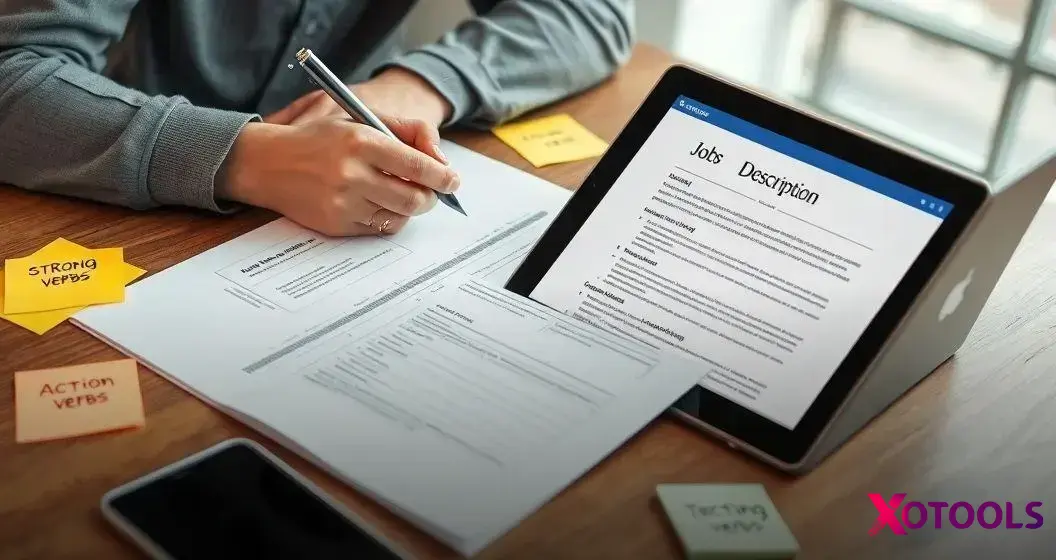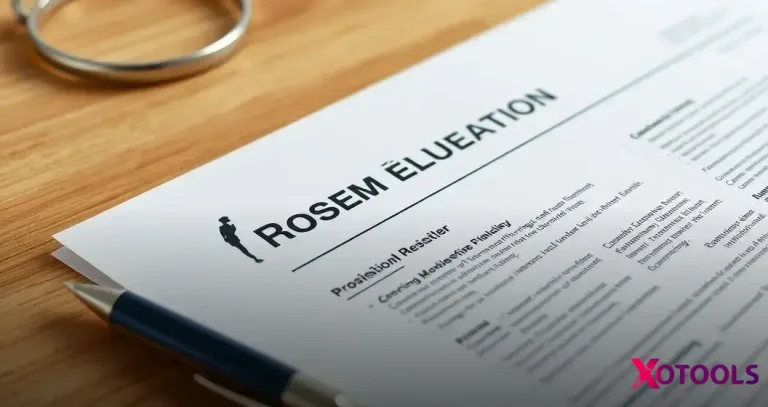ADVERTISEMENT
Changing careers can be daunting, but a well-crafted resume can make all the difference. Learning how to write a resume for career change opens new doors and opportunities. With the right strategies, you can present your skills and experiences effectively.
Employers look for potential, so emphasizing your transferable skills is essential. Highlight your achievements that relate to your new career path and make a compelling case for your candidacy.
Don’t let the challenge intimidate you. Keep reading to discover expert tips that will help you create a standout resume for your career change.
Understanding Resume Basics
Understanding the basics of a resume is the first step toward a successful career change. A resume is a document that lists your work experience, skills, and education. It gives employers a quick way to see if you are a good fit for their job. Knowing what to include and how to format your resume is crucial for making a great first impression.
There are a few key sections every good resume should have. These include your contact information, a summary statement, and your work history. Transferable skills are also important to highlight, especially when changing careers. Focus on what you can bring to a new role, even if your previous job was in a different field.
Finally, remember that your resume should be clear and easy to read. Use bullet points and short sentences to present your information. Tailoring your resume to the job description is vital, so make sure to adjust it for each application. A clean, well-organized resume will stand out to employers and improve your chances of landing an interview.
Identifying Transferable Skills
Identifying transferable skills is essential when shifting to a new career. These are abilities you have gained from your past jobs that can be applied in a different field. For example, if you have experience in customer service, your skills in communication, problem-solving, and teamwork can be valuable in many industries.
To find your transferable skills, consider your work experiences and achievements. Ask yourself what tasks you enjoyed and excelled at in your previous roles. Soft skills like adaptability, leadership, and time management are highly sought after by employers. Make a list of these skills to showcase them effectively on your resume.
Once you have identified your transferable skills, relate them to the job you desire. Customize your resume to highlight how these skills align with the requirements of the new position. Remember, emphasizing your unique strengths can make you stand out among other candidates in a competitive job market.
Tailoring Your Resume for New Roles

Tailoring your resume for new roles is a key step when making a career change. Each job you apply for may require different skills and experiences. Start by carefully reading the job description, focusing on the specific qualifications the employer seeks. This will help you understand which of your experiences align best with the new role.
Once you know what the employer is looking for, adjust your resume to highlight relevant skills. Use keywords from the job description to make your resume stand out. For example, if the job requires strong problem-solving skills, emphasize any experiences where you effectively solved challenges in your past work.
Additionally, consider reorganizing your resume sections to spotlight the most relevant information. You might move your summary statement or key achievements to the top or even create a separate section dedicated to skills. This approach makes it easy for hiring managers to see how you fit the new role right away.
Highlighting Relevant Experience
When highlighting relevant experience on your resume, it’s important to focus on jobs and tasks that relate closely to your new career path. Start by looking at your previous roles and identifying the duties that match the job description you’re applying for. For instance, if you’re transitioning to sales, emphasize any experience you have in customer interactions or sales-related tasks.
Use strong action verbs to describe your achievements in these roles. Words like managed, developed, and achieved can create a powerful impact. Be specific about your accomplishments. Instead of saying you “helped customers,” state how you “increased customer satisfaction by 30% through effective communication. This clarity shows potential employers the value you bring.
Also, consider including optional experiences, such as internships, volunteer work, or freelance projects that showcase relevant skills. Even if these experiences are not from formal employment, they can demonstrate your abilities and commitment to your new career. Tailoring this section of your resume helps convince employers that you are well-prepared for the new role.
Crafting a Strong Summary Statement
Crafting a strong summary statement is crucial for making a great impression on your resume. This brief section should highlight your most relevant experience, skills, and career goals. Start by clearly stating your current profession or area of expertise. For example, if you are shifting from marketing to project management, you might begin with something like, “Results-driven marketing specialist transitioning to project management with proven leadership skills.”
Next, include specific achievements that showcase your strengths. Instead of using general terms, think about quantifiable results that can impress potential employers. For instance, you could say, “Successfully increased online engagement by 50% through strategic campaigns,” which gives a clear picture of your capabilities and achievements.
Finally, be sure to connect your past experiences with your future goals. This helps employers see how your background can benefit their organization. A statement like, “Eager to leverage my marketing expertise to enhance project outcomes,” shows that you’re not just looking for any job but one where you can make a significant impact.
Using Action Verbs Effectively

Using action verbs effectively in your resume can make a big impact on how employers view your skills. Action verbs are powerful words that describe what you have done in your previous roles. Instead of saying you were responsible for a project, use a phrase like “led a project” to show that you took charge and achieved results. This small change can help demonstrate your leadership and initiative.
When selecting action verbs, choose words that reflect the specific accomplishments relevant to the job you’re applying for. For example, instead of saying you assisted with sales, you could say you “boosted sales by 20%”. This change not only highlights your involvement but also quantifies your success, making your accomplishments stand out to hiring managers.
Make a list of strong action verbs that you can use throughout your resume. Words like “developed”, “achieved”, and “implemented” can create a more engaging narrative about your work history. By integrating these powerful verbs, you can showcase your contributions and capabilities more effectively, helping your resume catch the eye of potential employers.
Showcasing Education and Certifications
Showcasing your education and certifications on your resume is essential, especially when changing careers. Start with your most relevant degrees first. Clearly list the name of the institution, the degree earned, and the year of completion. If you recently graduated, it’s a good idea to include your GPA if it’s impressive. This gives employers a quick view of your academic background.
In addition to formal education, include any certifications that relate to the new role you are pursuing. Certifications can help set you apart from other candidates, showing that you have specific knowledge and skills that are applicable to the job. For instance, if you are moving into IT, certifications like CompTIA A+ or Cisco Certified Network Associate (CCNA) highlight your expertise and commitment to the field.
Make sure your education and certifications section is organized and easy to read. You can use bullet points for clarity, but keep the text simple. Highlight any relevant coursework or achievements related to the job you want. This can help employers see how your educational background makes you a great fit for their position.
Design Tips for Career Change Resumes
Designing a resume for a career change requires a thoughtful approach. Start by choosing a clean and professional layout. Use clear headings and plenty of white space to make the document easy to read. A well-organized resume helps hiring managers find key information quickly. Avoid using overly complicated fonts or colors that can distract from your achievements.
Another important design tip is to emphasize skills and relevant experiences prominently. Consider using a skills section at the top of your resume. This way, employers can immediately see what you bring to the table, especially if your work history is from a different industry. Highlight your transferable skills and relevant certifications to draw attention to your qualifications for the new role.
Finally, always tailor the design to match the company culture you are applying to. If you are applying to a creative field, consider adding a touch of personality with a unique format or color scheme. However, for more traditional industries, keep it simple and professional. Aligning your resume design with the job environment can help you make a strong first impression.







